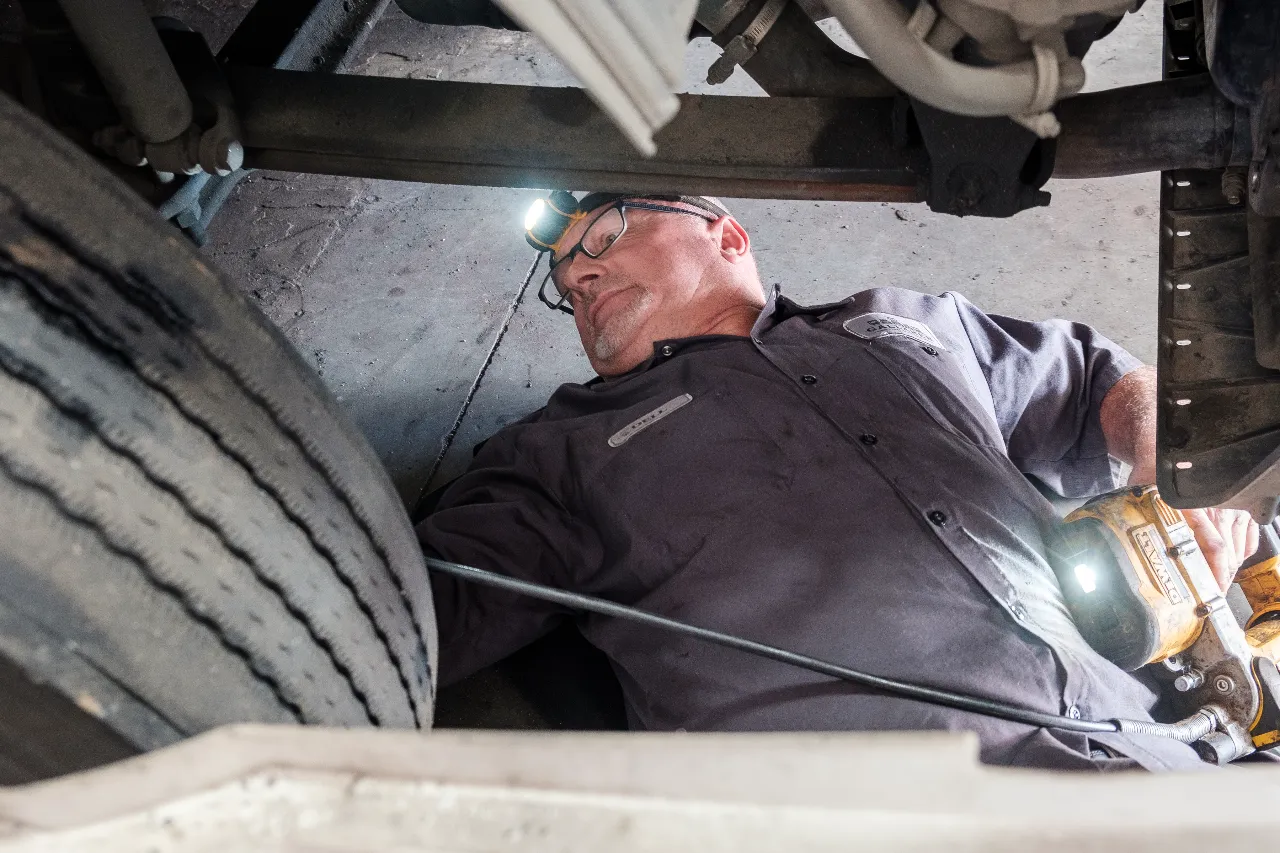For heavy-duty operators, wheel alignment is more than just driving comfort—it's a crucial aspect of safety, vehicle lifespan, and operational cost effectiveness. A misaligned wheel assembly can subtly impair performance, strain key parts, and lead to significant repair costs. Recognizing early signs of misalignment enables corrective measures before damage worsens.
The Importance of Proper Alignment
In a semi-truck, the steering and suspension systems work together to keep each tire contacting the road at the correct angle. This alignment guarantees even tire wear, predictable handling, and efficient fuel consumption. When alignment is out of place—due to road impacts, worn parts, or uneven cargo distribution—the entire vehicle system is affected. Misalignment increases rolling resistance, making the drivetrain work harder and using more fuel in the process.
Uneven or Premature Tire Wear
Tire inspection is a highly effective way to identify misalignment. Misaligned wheels often lead to feathered tread edges, uneven wear on one side, or rapid deterioration in specific areas. When the wheels are properly aligned, tread wear should be consistent across the entire surface of the tire. Detecting these issues early can help avoid the costs of premature replacement.
Inspection Tip: Run your hand along the tread. A “smooth one way, sharp the other” texture is a classic sign of misalignment.
Vehicle Pull or Steering Drift
A semi-truck that consistently veers left or right without steering input is a likely sign of toe or camber misalignment. This pull increases driver fatigue, demands constant correction, and can lead to unsafe lane departures—especially at highway speeds.
Steering Wheel Off-Center
When driving straight, the steering wheel should be level. If it appears noticeably tilted, it could indicate that one or more wheels are not tracking properly. Even slight deviations here suggest changes in steering geometry that need professional inspection.
Steering Wheel Vibration
Misaligned wheels can cause uneven forces between tires, leading to vibrations through the steering column. While such vibrations may also result from wheel imbalance or bearing wear, they require immediate inspection, especially after hitting a curb, pothole, or debris.
Fuel Efficiency Loss
An increase in fuel consumption without other mechanical causes often indicates misalignment. With higher rolling resistance, the engine, transmission, and driveline components must work harder, leading to increased wear on these systems and diminishing overall efficiency.
Causes of Wheel Misalignment in Semi-Trucks
- Road Impacts: Hitting potholes or curbs.
- Suspension Wear: Worn bushings, springs, or shocks can affect wheel alignment.
- Improper Loading: Uneven cargo distribution affects suspension geometry.
- Operational Wear: Gradual loosening of bolts and hardware over time.
Preventive Measures
Preventive maintenance is the most effective safeguard against costly damage. Misalignment left unaddressed can cause uneven loads on axles, bearings, and differentials, significantly reducing their service life. To prevent this:
- Schedule alignment inspections at regular service intervals.
- Monitor and record tread wear patterns.
- Repair suspension and steering parts promptly.
- Ensure cargo is loaded evenly and balanced.
Conclusion
Wheel alignment is crucial for the safety, efficiency, and lifespan of your semi-truck. For operators in Gaston County, NC, where diverse road conditions can speed up wear, regular inspections and prompt adjustments are vital. By fixing misalignment early, you not only maintain vehicle health but also safeguard operational profitability.



.jpg)
.jpg)
.jpg)
.jpg)



